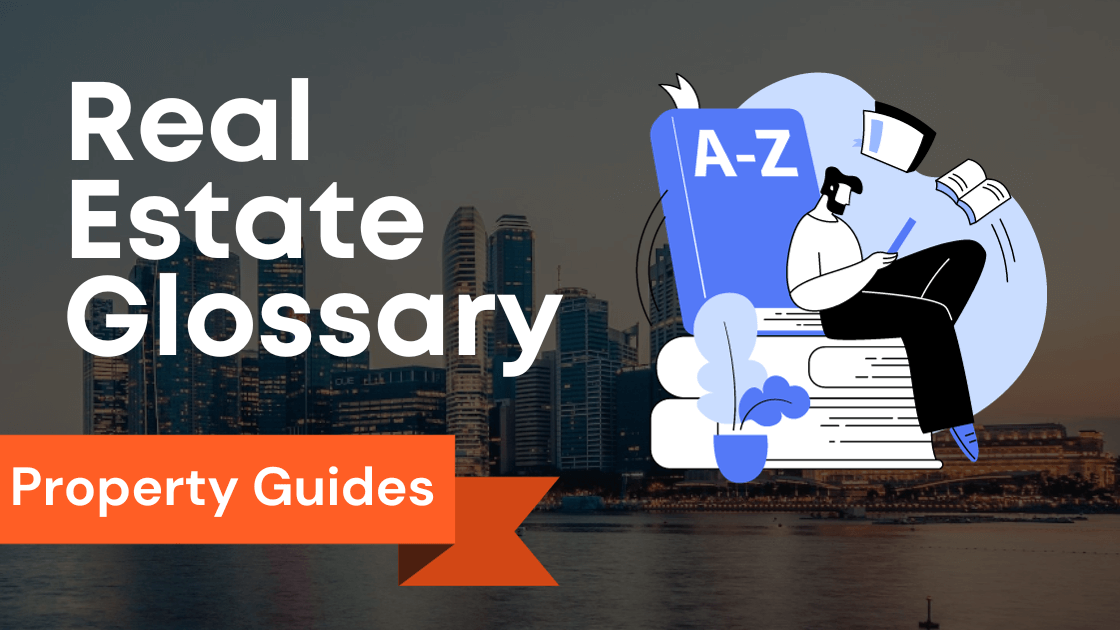
When it comes to planning for retirement, one of the key considerations is how to maximize your savings.
One strategy to consider is transferring your CPF Ordinary Account (OA) funds to your Special Account (SA) to take advantage of the various benefits it offers.
In this article, we will discuss the benefits of transferring your OA to SA, how to maximize tax relief through the transfer, when and how often you should consider transferring, and other strategies to make the most of your CPF for retirement.
Key Takeaways
| Key Takeaway | Information |
|---|---|
| What is CPF? | CPF is a comprehensive social security savings scheme in Singapore that helps citizens save for retirement, healthcare, and housing needs. |
| CPF Accounts | CPF has three main accounts: Ordinary Account (OA), Special Account (SA), and Medisave Account (MA), each with specific purposes and interest rates. |
| Purpose of CPF | CPF aims to provide a reliable income source and financial security during retirement while meeting housing and healthcare needs. |
| OA Purpose | The Ordinary Account (OA) is used for housing expenses like purchasing a home and mortgage payments. |
| SA Purpose | The Special Account (SA) focuses on long-term retirement planning with a higher interest rate. |
| Differences between OA and SA | OA for housing expenses with a lower interest rate, SA for retirement planning with a higher interest rate. |
| Importance of CPF for Retirement | CPF provides a steady income during retirement, ensuring financial security. |
| CPF Life | CPF Life offers lifelong monthly payouts, higher interest rate, and inflation adjustment for a secure retirement. |
| Transferring OA to SA | Transfers can be made after age 55, within specific limits to build a larger retirement nest egg. |
| Benefits of transferring OA to SA | Higher interest rate, maximizing tax relief, and boosting retirement savings. |
| Time to Transfer | Consider retirement needs, age, and expenses before transferring OA to SA. |
| Top-Up Your CPF SA | Understand limits, allocate excess funds, and explore investment options for top-ups. |
| Making the Most of CPF | Balance property and CPF investments, diversify with mutual funds or stocks. |
| CPF Investment Options | CPF Investment Scheme for higher returns, allocate savings based on risk tolerance and goals. |
| CPF Life Scheme | CPF Life offers different payout options, consider them for post-retirement planning. |
| CPF in Property Purchases and Housing | CPF funds can be used for property purchases and affect housing loan repayments. |
| Balancing Cash and CPF | Determine the right cash-CPF ratio based on financial goals and commitments. |
| Allocating More to CPF SA | Allocating more to SA offers higher interest rates and a stable return. |
| Sufficient Cash Reserves | Maintain cash reserves for emergencies and short-term financial needs. |
| Safeguarding Your Retirement | Consider factors in transferring CPF OA to SA and strategies to boost CPF savings. |
Understanding CPF (Central Provident Fund) and Its Accounts

What is CPF?
The Central Provident Fund (CPF) is a comprehensive social security savings scheme implemented by the Singapore government.
It is designed to help Singaporeans save for retirement, healthcare, and housing needs.
What are the different CPF accounts?
CPF has three main accounts: the Ordinary Account (OA), the Special Account (SA), and the Medisave Account (MA).
Each account serves a specific purpose and offers different interest rates.
What is the purpose of CPF?
The main purpose of CPF is to provide Singaporeans with a reliable source of income and financial security during retirement.
It also helps individuals meet their housing and healthcare needs.
Explaining the Ordinary Account (OA) and Special Account (SA) in CPF
What is the Ordinary Account (OA)?
The Ordinary Account (OA) is one of the three CPF accounts.
It is mainly used for housing-related expenses, including purchasing a home, paying mortgage loans, and monthly mortgage installments.
What is the Special Account (SA)?
The Special Account (SA) is another CPF account that focuses on long-term retirement planning.
It offers a higher interest rate compared to the OA and is designed to help individuals build a larger retirement nest egg.
What are the differences between the OA and SA?
The OA and SA differ in terms of the purpose of the funds and the interest rates offered.
The OA is primarily used for housing-related expenses and offers a lower interest rate, while the SA is dedicated to retirement planning and provides a higher interest rate.
The Importance of CPF in Retirement Planning

Why is CPF important for retirement planning?
CPF plays a crucial role in retirement planning as it provides a steady stream of income during retirement.
By contributing to their CPF accounts throughout their working years, individuals can ensure financial security in their golden years.
How does CPF help in ensuring financial security during
retirement?
CPF helps ensure financial security during retirement through various programs and schemes.
CPF Life, for example, provides a monthly payout to CPF members when they reach their payout eligibility age.
This ensures a regular income stream throughout retirement.
What are the benefits of CPF Life?
CPF Life offers several benefits, including lifelong monthly payouts, a higher interest rate on the retirement account (RA) balance, and an annual increase in payouts to offset the impact of inflation.
These features provide retirees with a stable and reliable income source.
Transferring CPF Ordinary Account (OA) Funds to Special Account (SA)
What is the process of transferring funds from OA to SA?
The process of transferring funds from the OA to the SA is relatively straightforward.
CPF members can initiate the transfer through their online CPF accounts.
When can I transfer my OA funds to SA?
CPF members can transfer their OA funds to the SA at any time, but there are specific conditions and age thresholds to be met.
One of the main conditions is that the transfer can only be made after the member turns 55 years old.
Are there any limits on the amount I can transfer?
Yes, there are limits on the amount that can be transferred from the OA to the SA.
The Transferred Retirement Sum (TRS) cannot exceed the Full Retirement Sum (FRS), which is set by CPF Board annually.
How to Transfer Your CPF OA Funds to SA: A Step-by-Step Guide

Step 1: Log in to your CPF account
To initiate the transfer, log in to your CPF account using your SingPass credentials.
Make sure you have your login details and two-factor authentication set up for secure access.
Step 2: Select the “Transfer OA to SA” option
Once logged in, navigate to the “Transfer OA to SA” option in your account dashboard.
This option will guide you through the transfer process step by step.
Step 3: Choose the amount to transfer
After selecting the transfer option, you will be prompted to choose the amount you wish to transfer from your OA to your SA.
Take into consideration the Transferred Retirement Sum (TRS) requirements and your overall retirement planning objectives.
Transferring your CPF savings from the OA to the SA can provide you with a higher interest rate and help you build a larger retirement nest egg.
It is a crucial step toward ensuring a financially secure future, especially during your retirement years.
By understanding the CPF accounts, their purpose, and the transfer process, you can make informed decisions and optimize your retirement planning strategies.
Benefits of Transferring Your OA Funds to SA for Retirement
Higher Interest Rate: One of the main benefits of transferring your OA funds to SA is the higher interest rate offered by the SA.
The SA currently offers an interest rate of 4% per annum, higher than the base interest rate offered by the OA.
By transferring your funds, you can potentially earn higher returns on your savings.
Maximizing Tax Relief: Another advantage of transferring your OA funds to SA is the opportunity to maximize tax relief.
By transferring your funds, you can enjoy tax deductions on the amount transferred, thereby reducing your taxable income.
Boosting Your Retirement Savings: Transferring your OA funds to SA can also help boost your retirement savings.
As the SA offers a higher interest rate, your funds have the potential to grow faster over time, providing you with a larger nest egg for your retirement years.
Maximizing Tax Relief through CPF OA to SA Transfer

Understanding CPF Contribution Rates: To fully maximize the tax relief through the CPF OA to SA transfer, it’s important to have a good understanding of the CPF contribution rates.
By knowing the rates and limits, you can make informed decisions on the amount to transfer and the impact it will have on your tax relief.
Utilizing Cash Top-ups: Another method to enhance tax relief is by utilizing cash top-ups.
By making cash contributions to your CPF SA, you can enjoy additional tax relief on top of the transfer from OA to SA.
This allows you to maximize your overall tax savings and build a larger retirement fund.
Exploring Investment Options: While the CPF SA offers a decent interest rate, considering other investment options can potentially yield higher returns.
By exploring investment products such as Singapore Government Securities or even individual stocks, you can diversify your portfolio and potentially achieve better long-term growth for your retirement savings.
Time to Transfer: When and How Often Should You Consider It?
Assessing Your Retirement Needs: The decision to transfer your OA funds to SA should be based on your retirement needs.
Assess how much you will require for a comfortable retirement and determine if the funds in your SA are sufficient to meet those needs.
If not, it may be a good time to consider transferring additional funds from your OA.
Considering Your Retirement Age: Your retirement age also plays a crucial role in determining when and how often you should transfer funds.
As the withdrawal age for CPF funds is currently set at 55, it’s important to consider your retirement plans and the number of years you have left before reaching that age.
If your retirement is approaching, it may be wise to transfer your OA funds to SA to maximize its growth potential.
Evaluating Monthly Income and Expenses: Lastly, evaluate your monthly income and expenses to determine if you have surplus funds that can be transferred from your OA to SA.
If you have excess cash or cash savings that are not needed for immediate expenses, transferring them to SA can help increase your retirement income in the long run.
Top-Up Your CPF SA: Boosting Your Retirement Savings

Understanding the Limitations: While top-ups to your CPF SA can be beneficial, it’s important to understand the limitations.
There are annual limits to the amount you can contribute, and exceeding these limits may not provide you with additional tax relief.
Be sure to check the CPF website for the latest information on contribution limits.
Allocating Excess Funds: If you have excess funds that cannot be transferred from your OA to SA, consider allocating them to other investment products.
Explore mutual funds or even government grants that can help grow your retirement savings further.
However, always assess the potential risks and returns before making any investment decisions.
Exploring Investment Products: As mentioned earlier, exploring investment products can potentially yield higher returns for your retirement savings.
Consider diversifying your portfolio by investing in mutual funds, individual stocks, or other investment options that align with your risk tolerance and financial goals.
Making the Most of CPF: Strategies for Effective Utilization
Balancing Property and CPF Investments:
For those who own property, it’s essential to strike a balance between property investments and CPF savings.
While property can provide potential capital appreciation, it’s also important to ensure you have sufficient funds in your CPF for retirement.
Consider consulting with a financial advisor to understand the best approach to managing your property and CPF investments.
Diversifying Your Portfolio with Mutual Funds:
Mutual funds offer a convenient way to diversify your investment portfolio.
By investing in a mix of stocks, bonds, and other assets, you can potentially achieve better risk-adjusted returns for your retirement savings.
However, always consider your investment objectives and the associated risks before investing.
Considering Individual Stocks:
For those who have a higher risk tolerance and a good understanding of the stock market, individual stocks can be a viable investment option.
However, it’s important to carefully research and analyze individual stocks before making any investment decisions.
Consider consulting with a financial advisor for guidance on selecting suitable stocks for your portfolio.
CPF Investment Options: Balancing Risk and Return

Understanding the CPF Investment Scheme
The CPF Investment Scheme allows CPF members to invest their CPF savings in various investment instruments to potentially earn higher returns.
By participating in the scheme, you have the opportunity to grow your CPF funds and increase your retirement savings.
Allocating Your CPF Savings for Investment
When it comes to investing your CPF savings, it’s important to carefully consider your risk tolerance and investment goals.
You can choose from a range of investment options, such as stocks, bonds, unit trusts, and more.
Allocating your CPF savings properly is crucial in managing the risk and maximizing the returns from your investments.
Maximizing Returns with CPF Investment
By actively managing your CPF investments, you can potentially earn higher returns compared to the standard CPF interest rates.
However, it’s important to assess your risk appetite and ensure that your investment choices align with your financial goals and risk tolerance.
CPF Life: The Retirement Scheme for CPF Members
Exploring the CPF Life Scheme
CPF Life is a life annuity scheme that provides a monthly payout for CPF members in their retirement years.
It offers a steady stream of income to support your living expenses after you stop working.
Understanding the CPF Life scheme is crucial in planning for a financially secure retirement.
Understanding the CPF Life Payout Options
CPF Life offers various payout options, including the Standard Plan, Basic Plan, and Escalating Plan.
Each option has its own set of features and benefits, which you need to consider based on your financial needs and preferences.
Planning for Retirement with CPF Life
When planning for your retirement, it’s essential to take into account the CPF Life scheme and the payout options available to you.
By making informed decisions and understanding the potential income streams from CPF Life, you can better plan for your post-retirement lifestyle.
The Role of CPF in Property Purchases and Housing Loans

Using CPF Funds for Property Purchases
CPF funds can be used for property purchases, such as buying a home or investing in real estate.
Utilizing your CPF savings can help ease the financial burden of purchasing a property, as it allows you to tap into your accumulated CPF savings for the down payment and other related costs.
How CPF Affects Your Housing Loan
CPF also plays an important role in housing loans.
The amount of CPF funds you can use for housing loan repayments depends on various factors, such as the outstanding loan amount, the value of the property, and your age.
Understanding these factors can help you make informed decisions when it comes to managing your housing loan.
Strategies for Managing CPF and Housing Loans
Managing your CPF funds and housing loans requires careful planning.
You should consider factors such as interest rates, loan repayment term, and CPF contribution rates.
By developing effective strategies, you can optimize your CPF usage and manage your housing loan effectively.
Balancing Cash and CPF: Optimizing Your Financial Portfolio
Determining the Right Cash-CPF Ratio
It’s crucial to strike the right balance between cash and CPF savings in your overall financial portfolio.
This balance depends on factors such as your financial goals, risk tolerance, and future financial commitments.
Assessing these factors can help you determine the optimal amount of cash and CPF to hold.
Benefits of Allocating More to CPF Special Account (SA)
Allocating a larger portion of your CPF savings to the Special Account (SA) can provide several benefits.
The SA offers a higher-interest rate compared to the Ordinary Account (OA), which means your funds can grow at a faster pace.
Additionally, the SA provides a stable interest rate that is reviewed periodically, ensuring a more predictable rate of return.
Considerations for Maintaining Sufficient Cash Reserves
While optimizing your CPF savings is important, it’s equally vital to maintain sufficient cash reserves.
Cash reserves act as a safety net for unexpected expenses or emergencies.
Careful consideration should be given to ensure you have enough liquid funds to cover your short-term financial needs.
Safeguarding Your Retirement: Ensuring Sufficient CPF Savings

Factors to Consider in Transferring CPF OA to SA
As you approach the age of 55, transferring your CPF Ordinary Account (OA) funds to your Special Account (SA) becomes an important consideration.
Factors such as your retirement goals, financial commitments, and future plans need to be taken into account when deciding if the transfer is suitable for you.
Understanding the Interest Rate Differences
The SA offers a higher interest rate compared to the OA, making it an attractive option for growing your retirement savings.
By transferring your OA funds to the SA, you can earn a higher interest and potentially boost your CPF savings.
Strategies to Boost Your CPF Savings
There are various strategies you can employ to boost your CPF savings.
These include making voluntary contributions, maximizing the use of government incentives, and optimizing your CPF investment options.
By taking a proactive approach, you can ensure a more secure and comfortable retirement.
Conclusion
In conclusion, understanding CPF and its accounts is crucial for Singaporeans to plan for a financially secure future.
The CPF scheme provides a reliable source of income and financial security during retirement while helping individuals meet their housing and healthcare needs.
Transferring funds from the Ordinary Account (OA) to the Special Account (SA) can be a smart move to maximize retirement savings.
This transfer offers a higher interest rate and potential tax relief, aiding in building a larger retirement nest egg.
By utilizing the CPF Investment Scheme and exploring CPF Life options, individuals can further optimize their retirement planning strategies.
Balancing CPF savings with other investment options, such as mutual funds or individual stocks, can enhance the potential for long-term growth.
Additionally, carefully managing CPF and housing loans can ease the financial burden of property purchases.
Striking the right balance between cash and CPF savings is crucial, as both play essential roles in a well-structured financial portfolio.
While optimizing CPF savings is important, maintaining sufficient cash reserves for emergencies is equally vital.
As individuals approach the age of 55, transferring OA funds to SA should be considered, taking into account retirement goals and financial commitments.
By employing strategies to boost CPF savings, individuals can safeguard their retirement and ensure a more comfortable future.
For more in-depth information on these topics and other essential financial matters, be sure to explore our other blog articles.
Properly utilizing CPF and understanding its various aspects can help you make informed decisions and achieve greater financial security in your golden years.
Frequently Asked Questions
What is the payment timeline for buying a HDB BTO flat?
The payment timeline for buying a HDB BTO flat can vary depending on several factors.
Let’s take a look at the general timeline to help you figure out when you need to make certain payments.
When can I start applying for a new flat?
You can start applying for a new flat as soon as the application period opens.
For BTO flats, the application period usually starts in May and August each year.
How long will it take for the BTO flat to be ready?
The estimated construction time for BTO flats can vary, but it generally takes around 3 to 4 years from the time you apply for the flat to the time it is ready for you to move in.
What do I need to do to be eligible for an HDB BTO flat?
To be eligible for an HDB BTO flat, you need to meet certain criteria set by HDB.
This includes being a Singapore citizen, at least 21 years old, and fulfilling the various eligibility schemes and requirements.
Can I purchase a BTO flat with an HDB loan?
Yes, you can purchase a BTO flat with an HDB housing loan.
The HDB loan will cover a portion of the flat’s purchase price, and you will need to make a downpayment for the remaining amount.
How much is the downpayment for a BTO flat?
The downpayment for a BTO flat is typically 25% of the purchase price.
This means that if the flat’s purchase price is $400,000, you will need to make a downpayment of $100,000.
What is the LTV ratio for buying a new HDB flat?
The Loan to Value (LTV) ratio for buying a new HDB flat is 90%.
This means that the maximum amount you can borrow for the flat is 90% of its purchase price.
When do I need to make the downpayment for the BTO flat?
The downpayment for the BTO flat is usually required to be made within 4 months from the date of booking the flat.
However, you should refer to the specific payment schedule provided by HDB for the exact timeline.
What is the payment timeline if I take out a bank loan for the BTO flat?
If you choose to take out a bank loan to finance your BTO flat, the payment timeline may differ from the HDB loan timeline.
It is advisable to check with the bank for the specific payment schedule and requirements.
What happens if I miss a payment for the BTO flat?
If you miss a payment for the BTO flat, there may be penalties and consequences.
It is important to fulfill your payment obligations on time to avoid any legal or financial issues.




















